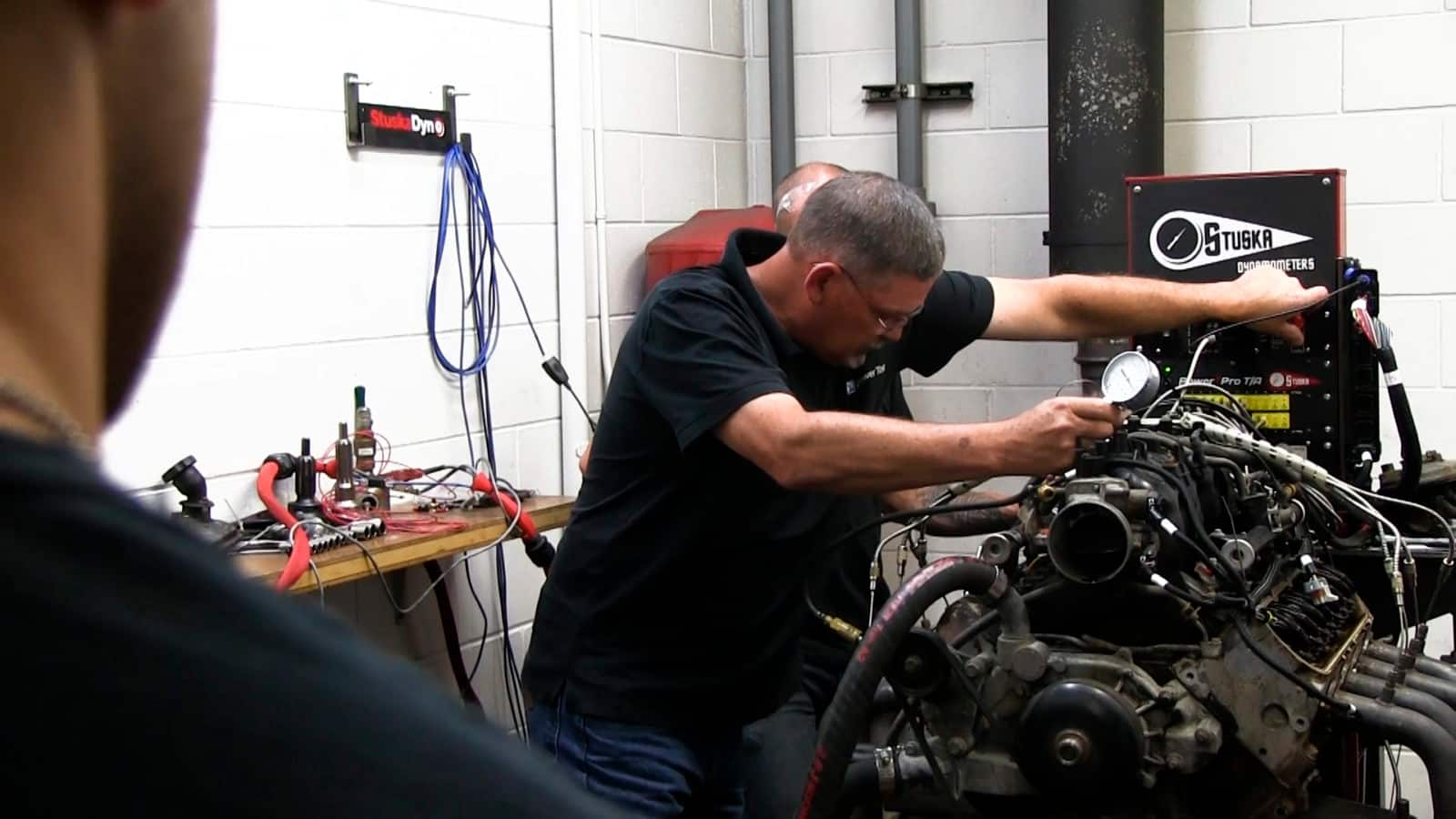Engine Build Series – Day 4
Employees skipped the first Thursday of the month for the Fourth of July holiday and instead stayed late on July 11th to make some additional progress on the Power Test Budget Engine Build. This project is a chance for Power Test employees to share their engine building knowledge with their co-workers, test their work on one of our performance engine dynos, and build comradery along the way.
— Transcript —
We’ve got an LS that we’ve been putting together over the last couple months. We got it running and feel comfortable with how it’s running want to get a baseline on the dyno. We went through initially to do a compression check. we’re going to do a leak down check just to show everybody what the difference is between the two, how to troubleshoot and how to get a baseline so we know if we have a problem. Later, the LS will get pulled out from there we’re going to upgrade the cam and change valve springs so the LS will be ready to go back in the test so next month.
In the meantime, Russ has this big block here that’s going to go on his personal car. We’ve kind of got that set up the way it’s going to go in the car we’re going to run that to get a baseline for him. We’re going to go through a little bit of carburetor jetting, set and timing, kind of show what advance and retard does, show what lean and rich will do on the carburation side. John and I kind of decided that even though the big block is is old-school, the effects of what changing jets and timing do are the same thing we’re going to do through the ECM on the LS, so it’s just another way to show those that are here or the changes do.
The whole crux of us doing this is that we’re a company that predominantly used to test diesel and now we’re knee deep in the automotive world, specifically the racing world. There’s a few folks that are into cars automotive and making things go run better and faster. Our customers are into this knee deep. It’s their living and we’re trying to make our employees have a sense of what our customers are talking about, what they’re doing and why they’re doing it so when they go on-site they have a they have a real strong connection with the customer because they know their way around an engine.


